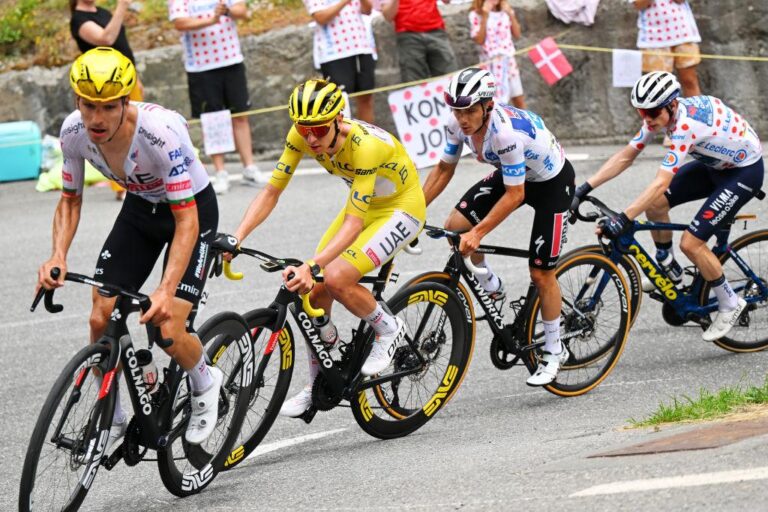Why Does the Tour de France Keep Getting Faster?
As the world’s most prestigious cycling race, the Tour de France captivates millions every summer with its grueling mountain stages and high-speed sprints. Yet, in recent years, one phenomenon has dominated discussions among fans and analysts alike: the rapid acceleration of race times. With average speeds soaring to unprecedented levels, questions arise about the factors driving this evolution. In this article, we delve into the myriad influences contributing to the ever-increasing pace of the Tour de France, from advancements in technology and training to the fine-tuning of nutrition and race strategies. Join us as we explore how the fight for seconds is reshaping one of the most challenging athletic contests in the world.
The Evolution of Training Techniques in Competitive Cycling
The rise of competitive cycling performance can be attributed to a myriad of innovative training techniques that have emerged over the years. Athletes now utilize advanced periodization strategies which allow for tailored training cycles that promote optimal performance at specific times during the racing season. These strategies include:
- High-Intensity Interval Training (HIIT) – Short, intense bursts of effort that enhance aerobic capacity.
- Endurance Blocks – Prolonged periods of steady-state riding to build stamina.
- Strength Training – Cross-training tactics that improve muscle power and durability.
Furthermore, the integration of technology has revolutionized the way cyclists prepare. Data analytics, wearable devices, and sophisticated software enable riders and coaches to monitor progress with unprecedented precision. Important metrics tracked include VO2 max, lactate threshold, and power output, which inform every aspect of training regimens. The table below highlights some key technological advancements that have shaped contemporary training methodologies:
| Technology | Impact on Training |
|---|---|
| Power Meters | Enable precise measurement of effort across different terrains. |
| GPS Devices | Assist in route planning and analysis of performance data. |
| Smart Trainers | Allow for controlled indoor training with real-time feedback. |
Technological Advancements Driving Increased Speeds
In recent years, the evolution of cycling technology has played a crucial role in enhancing the performance of riders in the Tour de France. Cutting-edge materials and engineering innovations have yielded bicycles that are both lighter and more aerodynamic. For instance, high-modulus carbon fiber is now commonly used, reducing weight while maintaining rigidity. Furthermore, advancements in gear systems have made shifting smoother and more efficient, allowing cyclists to maintain optimal cadence even on the most challenging terrains. Key elements contributing to this technological leap include:
- Aerodynamic design: Frames are designed to minimize wind resistance.
- Wheel technology: Deeper rims and tubeless tires enhance speed and comfort.
- Smart technology: Integrated sensors provide real-time data on performance metrics.
Moreover, improvements in training methods and nutrition science have redefined the limits of human endurance. Athletes now harness detailed metrics with the aid of wearables, enabling them to tailor their training regimens to optimize performance. This newfound precision in training, in conjunction with bespoke dietary plans, has led to a marked increase in race speeds. The table below exemplifies the progress made in average race speeds over the decades:
| Year | Average Speed (km/h) |
|---|---|
| 1950 | 25.0 |
| 1980 | 32.0 |
| 2000 | 37.0 |
| 2020 | 42.0 |
The Role of Nutrition and Recovery in Performance Enhancement
As competitors in the Tour de France continue to push the limits of human endurance, the importance of a well-structured nutrition plan becomes increasingly apparent. Athletes are now focusing on optimizing their diet to enhance performance through key nutritional components, including:
- Carbohydrates: Essential for energy replenishment, particularly in high-intensity stages.
- Proteins: Crucial for muscle repair and recovery following grueling rides.
- Fats: A vital energy source during longer, less intense efforts.
- Hydration: Maintaining fluid balance is critical for peak performance in extreme conditions.
Moreover, recovery strategies are being meticulously tailored to ensure optimal performance on consecutive race days. Incorporating practices such as:
- Active Recovery: Gentle cycling or stretching to promote blood flow and hasten muscle recovery.
- Restful Sleep: Prioritizing quality sleep to aid in physical and mental recovery.
- Massage Therapy: Reducing muscle soreness and improving circulation through professional treatments.
These holistic approaches are reshaping how athletes prepare for each stage, leading to faster overall times and record-breaking performances year after year.
Understanding the Impact of Team Strategies on Race Pace
The strategies adopted by teams in the Tour de France play a crucial role in determining race pace. Teams have evolved from traditional methods to more sophisticated, data-driven approaches that emphasize not only individual performance but also collective dynamics. These modern strategies often involve advanced training techniques, real-time data analysis, and strategic collaboration among riders. By analyzing factors such as aerodynamic efficiency and energy expenditure, teams can optimize their performance during various stages, ensuring that riders maintain an ideal pace throughout the grueling race.
Moreover, the competition within professional cycling has intensified, compelling teams to innovate continually. The deployment of support staff and cutting-edge technology—like GPS tracking and environmental sensors—allows teams to gather indispensable insights. These developments enable quick tactical decisions, such as when to attack or conserve energy, which collectively contribute to faster race times. In essence, it’s not merely about the top riders; the cohesive strategy of the whole team effectively lowers the pace, pushing the limits of what was previously thought achievable in endurance cycling.
In Retrospect
As the Tour de France continues to captivate audiences worldwide, the growing speed of the race raises intriguing questions about the evolution of competitive cycling. With advancements in technology, training, and nutrition all playing a pivotal role, the trend of increasingly faster times shows no signs of slowing down. The implications for the sport, its athletes, and fans are profound, challenging traditional perceptions of endurance racing. As we look ahead to future editions of the Tour, it remains critical to monitor these changes and their impact on the spirit and integrity of one of the world’s most prestigious sporting events. For cycling enthusiasts and casual observers alike, the race’s trajectory promises not only thrilling competition but also a deeper exploration of what it means to push human limits.




